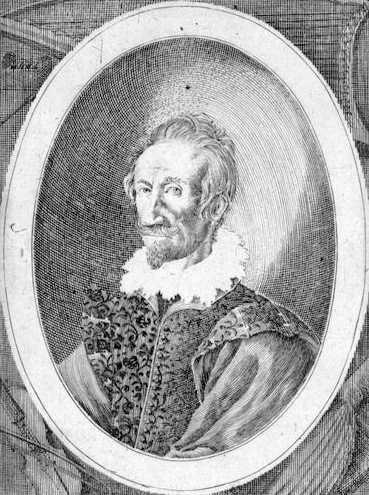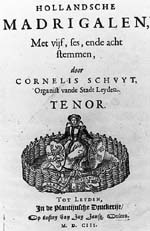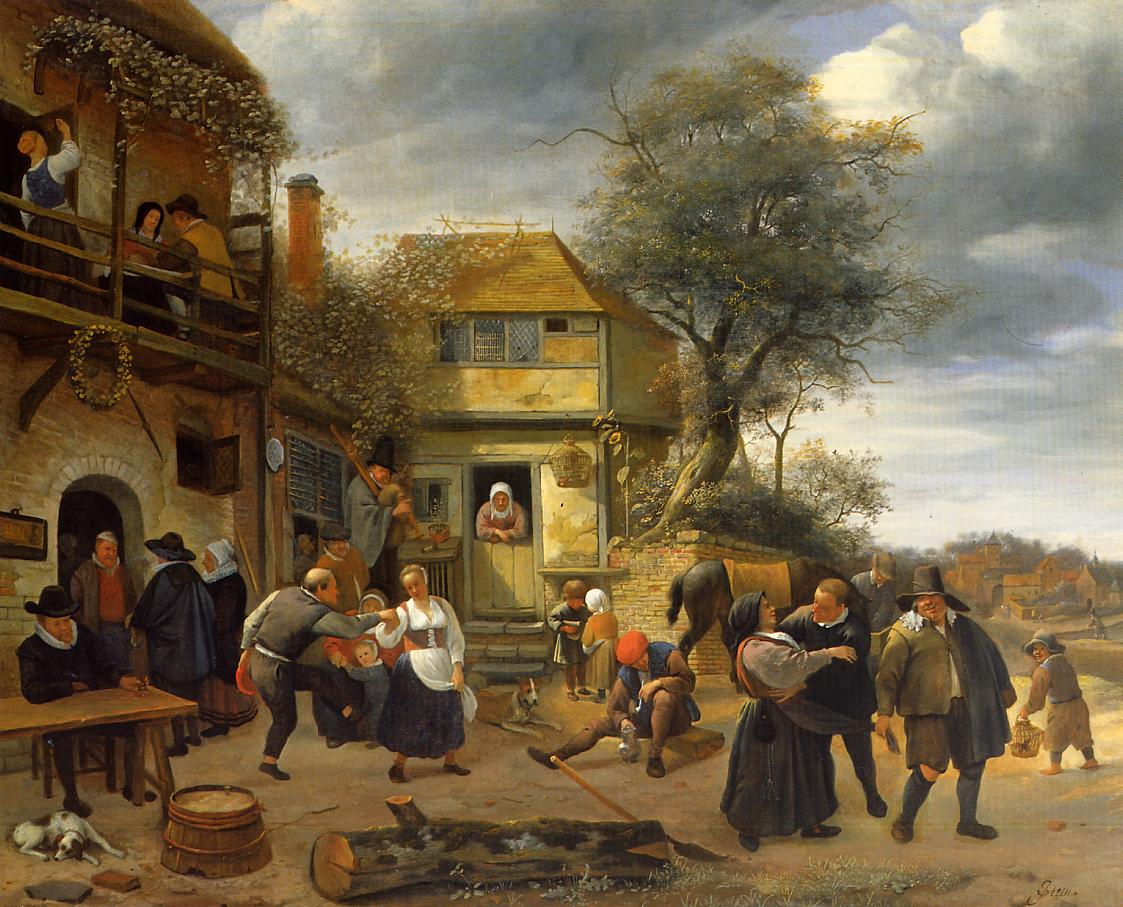|
Camerata Trajectina
Camerata Trajectina is a Dutch early music ensemble (in English, the word, " camerata," generally means a choir or small chamber orchestra). The ensemble was founded in Utrecht (hence Latin ''trajectina''; of Utrecht) in 1974 by Jos van Veldhoven and Jan Nuchelmans. Following the departure of Veldhoven in 1976 to lead the Utrechts Barok Consort, leadership of the ensemble passed to the current director, the musicologist Louis Peter Grijp (b. 1954). The ensemble has specialised in recovering and sometimes reconstructing Dutch vocal music from the Dutch Golden Age, and much of its discography are of Dutch-language songs which have not been recorded. The ensemble has particularly concentrated on domestic, middle-class, and Dutch-language church music which—unlike the Latin language church music of the Spanish Netherlands—is little known and little researched. The lyrics of the recovered songs often illustrate cultural history, as in the case of the ensemble's two recordings of Du ... [...More Info...] [...Related Items...] OR: [Wikipedia] [Google] [Baidu] |
Buurkerk En Domtoren
The Buurkerk is a former church building in Utrecht (city), Netherlands on the Buurkerkhof. The building is the location of the Museum Speelklok, and the entrance is on the Steenweg. It is one of the medieval parish churches of Utrecht, along with the Jacobikerk, the Nicolaïkerk and the Geertekerk. History The building is documented as being burned in 1131, 1173, 1253 and 1279. The tower dates from 1370, but was never finished.Museum website In 1577 a cannon was installed in the church tower, aimed at the Vredenburg castle where the Charles V's Spanish soldiers there were under siege by the Utrecht schutters. Around 1580 the church endured the protestant reformation and in 1586 it was formally handed over to the protestants, who whitewashed the wall decorations and removed the choir to make room for a street. The Choorstraat which is named after the deconstructed choir still has the outlines of the old choir in the pavement. In 1975 the church fell into religious disuse. The ... [...More Info...] [...Related Items...] OR: [Wikipedia] [Google] [Baidu] |
Jacob Van Eyck
Jacob van Eyck ( , ; 26 March 1657) was a Dutch nobleman and blind musician. He was one of the best-known musicians of the Dutch Golden Age, working as a carillon player and technician, an organist, a recorder virtuoso, and a composer. He was an expert in bell casting and tuning, and taught Pieter and François Hemony how to tune a carillon. Van Eyck is credited with developing the modern carillon together with the brothers in 1644, when they cast the first tuned carillon in Zutphen. He is also known for his collection of 143 melodies for recorder, , the largest work for a solo wind instrument in European history. Biography Early life Jacob van Eyck was born in 1589 or 1590 into a noble family probably in the small town of Heusden. Born blind, he lived with his mother and father well into adulthood. Van Eyck became involved as a player and technician of village's carillon by 1619. He met with several craftsmen and the city organist to discuss changes and improvement ... [...More Info...] [...Related Items...] OR: [Wikipedia] [Google] [Baidu] |
Goudimel
Claude Goudimel (c. 1514 to 1520 – between 28 August and 31 August 1572) was a FrenchPaul-André Gaillard, "Goudimel, Claude", ''The New Grove Dictionary of Music and Musicians'', ed. Stanley Sadie. 20 vol. London, Macmillan Publishers Ltd., 1980. composer, music editor and publisher, and music theorist of the High Renaissance. Biography Claude Goudimel was born in Besançon, modern-day France, which at that time was a French-speaking imperial city of the Holy Roman Empire. Few details of his life are known until he is documented in Paris in 1549, where he was studying at the University of Paris; in that year he also published a book of chansons. In the early 1550s he worked with printer , and may have still been studying at the University of Paris until 1555; by 1555 he was also Du Chemin's partner in the publishing business. Goudimel moved to Metz in 1557, converting to Protestantism, and is known to have been associated with the Huguenot cause there; however he left Met ... [...More Info...] [...Related Items...] OR: [Wikipedia] [Google] [Baidu] |
Gysbert Japiks
Gysbert Japiks or Japicx or Japix (1603–1666) was a West Frisian writer, poet, schoolmaster, and cantor. Life Japiks was born in Bolsward, Friesland, as Gysbert Japiks Holckema or Holkema. Japiks used his patronym and not his surname in his writing. Japiks was a school teacher by profession. In 1656, three of his children had died of the plague and Japiks' eye sight had been affected by the disease. Except for his son Salves, he would lose all his children and his wife to disease. In 1666 Japiks died of the plague. Japiks started writing from an early age. He wrote in Dutch, Frisian and Latin. He admired the Latin poets Horace and Ovid, but was also an enthusiast for his own West Frisian ''memmetaal'', or mother tongue. His first known poetry in dates back from 1639. In his early works Japiks portrayed the life of rural Friesland, and was characterised by excessive alliteration. Much of his work were translations and reworkings of Latin poets, but also the Dutch poets Vonde ... [...More Info...] [...Related Items...] OR: [Wikipedia] [Google] [Baidu] |
Peace Of Münster
The Peace of Münster was a treaty between the Lords States General of the Seven United Netherlands and the Spanish Crown, the terms of which were agreed on 30 January 1648. The treaty, parallelly negotiated to but not part of the Peace of Westphalia, is a key event in Dutch history, marking the formal recognition of the independent Dutch Republic and the end of the Thirty Years' War and the Eighty Years' War. Background Negotiations Negotiations between began in 1641 in the towns of Münster and Osnabrück, in present-day Germany. With the initiation of Spanish-Dutch peace talks, Dutch trade with the Levant and the Iberian Peninsula began to flourish. Dutch merchants, benefiting from both the availability of relatively cheap shipping and the cessation of hostilities, soon dominated the markets that had been previously dominated by English traders. Dutch merchants would also benefit from the foreign upheavals of the English Civil War and gain on English trade in their ... [...More Info...] [...Related Items...] OR: [Wikipedia] [Google] [Baidu] |
Ludovicus Episcopius
Lodewijk de Bisschop, latinised as Ludovicus Episcopius (c. 1520 in Mechelen – 29 April 1595 in Straubing) was a Flemish Roman Catholic priest and composer of the late Renaissance and one of the first to compose secular songs in the Dutch language.Ludovicus Episcopius at Stichting Maastrichtse Componisten Episcopius on the web site of Muziekcentrum Vlaanderen VZW Life Episcopius was born in Mechelen around 1520 as the son of Antonius de Bisschop. His father was the sexton and singer of the Onze-Lieve-Vrouw-over-de-Dijle church in Mechelen. His received his musical ...[...More Info...] [...Related Items...] OR: [Wikipedia] [Google] [Baidu] |
Maastricht
Maastricht ( , , ; li, Mestreech ; french: Maestricht ; es, Mastrique ) is a city and a municipality in the southeastern Netherlands. It is the capital and largest city of the province of Limburg. Maastricht is located on both sides of the Meuse ( nl, Maas), at the point where the Jeker joins it. Mount Saint Peter (''Sint-Pietersberg'') is largely situated within the city's municipal borders. Maastricht is about 175 km south east of the capital Amsterdam and 65 km from Eindhoven; it is adjacent to the border with Belgium and is part of the Meuse-Rhine Euroregion, an international metropolis with a population of about 3.9 million, which includes the nearby German and Belgian cities of Aachen, Liège and Hasselt. Maastricht developed from a Roman settlement (''Trajectum ad Mosam'') to a medieval religious centre. In the 16th century it became a garrison town and in the 19th century an early industrial centre. Today, the city is a thriving cultural and regional hub. It beca ... [...More Info...] [...Related Items...] OR: [Wikipedia] [Google] [Baidu] |
Joan Albert Ban
Joan Albert Ban (1597–1644) was a Dutch Catholic priest and composer. Life From 1628-42 he was canon priest of the Haarlem chapter (Kapittel). In 1630 he became priest of the Begijnhof in Haarlem, across the street from the Janskerk (Haarlem). Musically self-taught, he corresponded with Marin Mersenne. This correspondence was begun thanks to Constantijn Huygens, who later joined the correspondence, as did Descartes, of whom Ban was a great admirer. Ban also wrote a ''Dissertio epistolica de musicae natura'' in 1637 on musical evolution and 'musica flexanima' ( melodic intervals and their emotional effects), sending copies to his correspondents. Ban sent Mersenne some of his compositions and, though the latter criticised them heavily and though Mersenne later weighted a musical competition between Ban and Antoine Boësset in favour of the latter, he and Ban continued to correspond. He also corresponded with P. C. Hooft and later Joost van den Vondel wrote a poem in honor of his co ... [...More Info...] [...Related Items...] OR: [Wikipedia] [Google] [Baidu] |
Cornelis Tymanszoon Padbrué
Cornelis is a Dutch form of the male given name Cornelius. Some common shortened versions of Cornelis in Dutch are Cees, Cor, Corné, Corneel, Crelis, Kees, Neel and Nelis. Cornelis (Kees) and Johannes (Jan) used to be the most common given names in the Low Countries, and the origin of the term Yankees is commonly thought to derive from the term Jan-Kees for the Dutch settlers in New Netherland. Among the notable persons named Cornelis are: * Cornelis Engebrechtsz (c. 1462–1527), painter from Leiden * Cornelis Massijs (c. 1508–1556), painter from Flanders, Belgium * Cornelis Floris de Vriendt (1513/14-1575), architect and sculptor * Cornelis Cort (c. 1533–1578), engraver and draughtsman * Cornelis Corneliszoon (c. 1550–1607), inventor of the wind powered sawmill * Cor Dillen (c. 1920–2009), director of Philips and their CEO in South America * Cornelis van Haarlem (1562–1638), leading Northern Mannerist painter * Cornelis de Houtman (1565–1599), explorer who start ... [...More Info...] [...Related Items...] OR: [Wikipedia] [Google] [Baidu] |
Cornelis Schuyt
Cornelis Floriszoon Schuyt (1557 – 9 June 1616) was a Dutch organist and Renaissance composer. Life Cornelis Floriszoon Schuyt was born in Leiden in 1557. He was the son of Floris Corneliszoon Schuyt (1529/30–1601), the organist of two churches in Leiden, the Pieterskerk and the Hooglandse Kerk. Schuyt was introduced to Renaissance music. on a study trip to Italy. In 1593, alongside his father, Schuyt became an organist in the Pieterskerk and the Hooglandse Kerk, . After his father's death in 1601, he became the Pieterskerk's main organist. Schuyt published four volumes with compositions, with three volumes of madrigals. None of his organ music has survived. Schuyt died on 9 June 1616 and was buried in the Pieterskerk, a church in Leiden. Remembrance His name is written in the main hall of the Concertgebouw in Amsterdam, Netherlands and the () in Amsterdam-Zuid Amsterdam-Zuid (; ''Amsterdam South'') is a borough (''stadsdeel'') of Amsterdam, Netherlands. The boroug ... [...More Info...] [...Related Items...] OR: [Wikipedia] [Google] [Baidu] |
Jan Steen
Jan Havickszoon Steen (c. 1626 – buried 3 February 1679) was a Dutch Golden Age painter, one of the leading genre painters of the 17th century. His works are known for their psychological insight, sense of humour and abundance of colour. Life Steen was born in Leiden, a town in Southern Holland, where his well-to-do, Catholic family were brewers who ran the tavern ''The Red Halbert'' for two generations. Steen's father even leased him a brewery of his own in Delft from the years 1654 until 1657. He was the eldest of eight or more children. Like his even more famous contemporary Rembrandt van Rijn, Jan Steen attended the Latin school and became a student in Leiden. Though no official records of Steen's artistic training are preserved, contemporary sources tell us he received his painterly education from three men, Nicolaes Knupfer (1603–1660), a German painter of historical and figurative scenes in Utrecht, Adriaen van Ostade, and Jan van Goyen, who would later become ... [...More Info...] [...Related Items...] OR: [Wikipedia] [Google] [Baidu] |
Mennonite
Mennonites are groups of Anabaptist Christian church communities of denominations. The name is derived from the founder of the movement, Menno Simons (1496–1561) of Friesland. Through his writings about Reformed Christianity during the Radical Reformation, Simons articulated and formalized the teachings of earlier Swiss founders, with the early teachings of the Mennonites founded on the belief in both the mission and ministry of Jesus, which the original Anabaptist followers held with great conviction, despite persecution by various Roman Catholic and Mainline Protestant states. Formal Mennonite beliefs were codified in the Dordrecht Confession of Faith in 1632, which affirmed "the baptism of believers only, the washing of the feet as a symbol of servanthood, church discipline, the shunning of the excommunicated, the non-swearing of oaths, marriage within the same church, strict pacifistic physical nonresistance, anti-Catholicism and in general, more emphasis on "true Chris ... [...More Info...] [...Related Items...] OR: [Wikipedia] [Google] [Baidu] |



.jpg)




